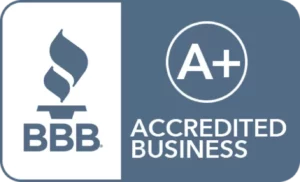When choosing between a Solo 401(k) vs. an IRA, there are many important factors to consider. Most importantly are the eligibility requirements. As long as you have earned income in a given year, you can contribute to an IRA. However, to fund a Solo 401(k), you must have some type of self-employed income. This can come from an owner-only business or any type of money you receive working for yourself. Other factors, which we will discuss in detail, include contribution limits, loan options and costs. It’s up to you decide which plan works for you.
What is an IRA?
An IRA, or Individual Retirement Account, is a retirement plan that just about anyone can open. As I mentioned, all you need is some form of earned income to contribute to one. Generally, earned income comes from the money you receive from working at a job. Union strike pay and long term disability benefits are also considered earned income. On the other hand, income such as alimony, child support, social security benefits and unemployment are not “earned.” Therefore, these funds are not factored in when determining your earned income on the year.
You must adhere to the annual contribution limits set forth by the IRS. For 2023, you can contribute $6,500 to an IRA. If you are at least age 50, you may contribute another $1,000 for a total of $7,500. Keep in mind, you must have enough earned income to contribute these amounts. For example, if you work part-time and made $4,000 for the year, that is the max you may contribute.
IRAs are tax-advantaged accounts that allow you to save money for retirement. Traditional plans are funded with pretax money. Taxes are deferred until you start withdrawing during retirement. Alternatively, Roth IRAs are funded with after-tax money. Instead of receiving an immediate tax break, all qualified distributions during retirement are tax-free.
Lastly, IRAs can invest in traditional, as well as alternative, assets. Traditional investments, which include stocks, bonds and mutual funds, can be made with any IRA. Alternative assets, such as real estate and precious metals, can only be invested in with a Self-Directed IRA. If you wish to invest in alternatives, you must choose a passive custodian, such as IRA Financial.
What is a Solo 401(k)?
A Solo 401(k) is like any workplace 401(k) that’s designed for self-employed individuals. As we stated in the opening, you must have self-employment income to fund a Solo 401(k). If you have your own business, you cannot have any full-time employees other than a spouse or partner. Once you hire employees, you can no longer fund the plan. Alternatively, you can use a Solo 401(k) if you have any other type of self-employed income. This may include work as a consultant, Uber driving or mowing lawns. If you can satisfy the eligibility rules, you can take advantage of the Solo 401(k).
As with an IRA, the Solo 401(k) has its own set of contribution limits. The big difference is the amount you can contribute with the Solo 401(k). As an employee of the plan, you can contribute up to $22,500 for 2023. Additionally, you can contribute another $7,500 if age 50 or older. Total contribution limit for a Solo 401(k) is $66,000 or $73,500 if you are at least 50 years old.
Just like with IRAs, you can choose to save in a traditional Solo 401(k) or Roth. Further, the same types of investments can be made as well. So long as the investment is not prohibited by the IRS, you can make it. The only investments that cannot be made, per the IRS, is life insurance (in an IRA), certain collectibles and any transaction that involves a disqualified person.
Solo 401(k) vs. IRA
Now, it’s time to compare the Solo 401(k) vs. an IRA. Obviously, if you don’t have self-employed income or you have a business with full-time employees, you cannot start a Solo 401(k). Therefore, you have no choice to choose an IRA, which is perfectly acceptable. However, if you are self-employed, here is why a Solo 401(k) is a better choice:
Higher Contribution Limits: As we touched upon, a Solo 401(k) is far superior in regards to how much you can contribute annually. If your goal is to save as much as possible, no other retirement plan comes close.
Loan Option: Unlike an IRA, a Solo 401(k) offers you the ability to borrow from the plan. You may borrow 50% of the account value or $50,000, whichever is less. Moreover, you can use the funds for whatever you see fit.
Fees: You might not think it, but a Solo 401(k) is just as cost efficient as an IRA. Maintenance and other fees are very low. In fact, if your Solo 401(k) is worth less than $250,000, you don’t have to worry about annual filings.
No Custodian: IRAs require a custodian to manage the account. However, a Solo 401(k) can be open at any bank or credit union. You, as the owner of the plan, act as the trustee. This means that you are accountable for all investment decisions. Again, this means there are less fees to deal with.
UDFI/UBTI – Lastly, the most popular alternative investment in retirement accounts is real estate. When using a Solo 401(k) to invest in a property, you don’t have to worry about UBTI or UDFI taxes. This is a tax that’s levied when you borrow money to purchase a property (with an IRA).
Solo 401(k) vs. IRA: The Choice is Clear
For anyone who is self-employed and is looking to start a retirement account, there is a clear winner. A Solo 401(k) offers one more flexibility than an IRA. However, make no mistake, an IRA is an invaluable retirement options as well. Even if you cannot use a Solo 401(k), every attempt should be made to save for your future.
If you have any questions about the Solo 401(k) vs. an IRA, please reach out to us @ 800.472.1043. Thanks for reading!











